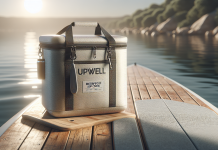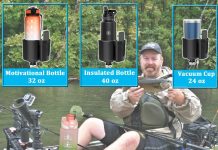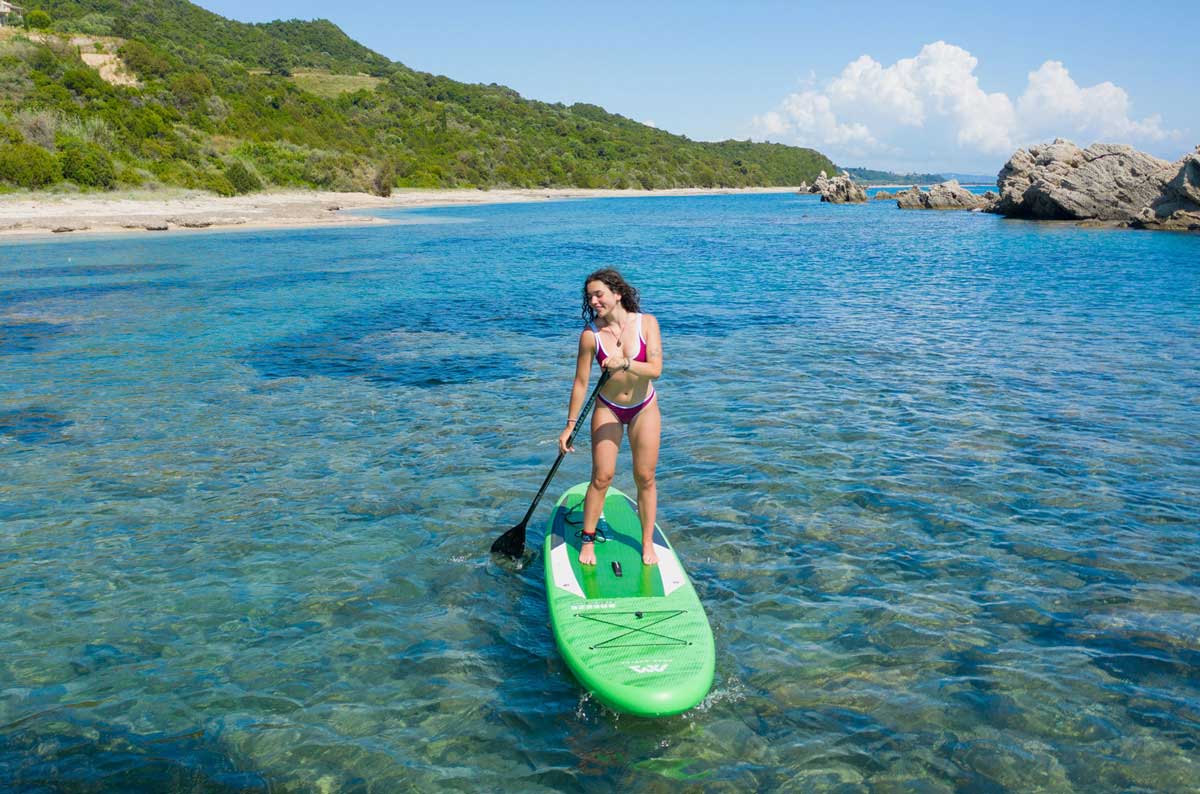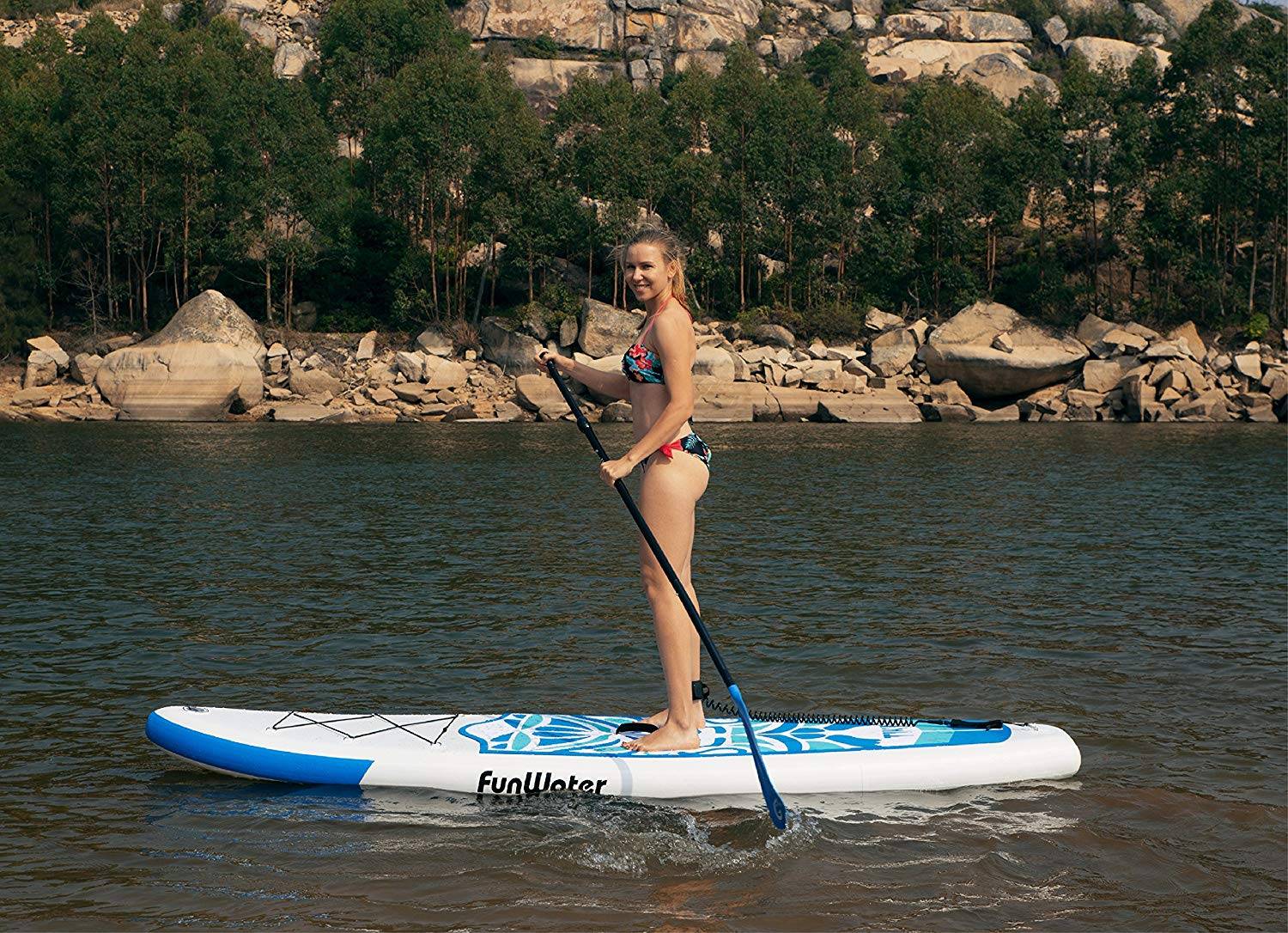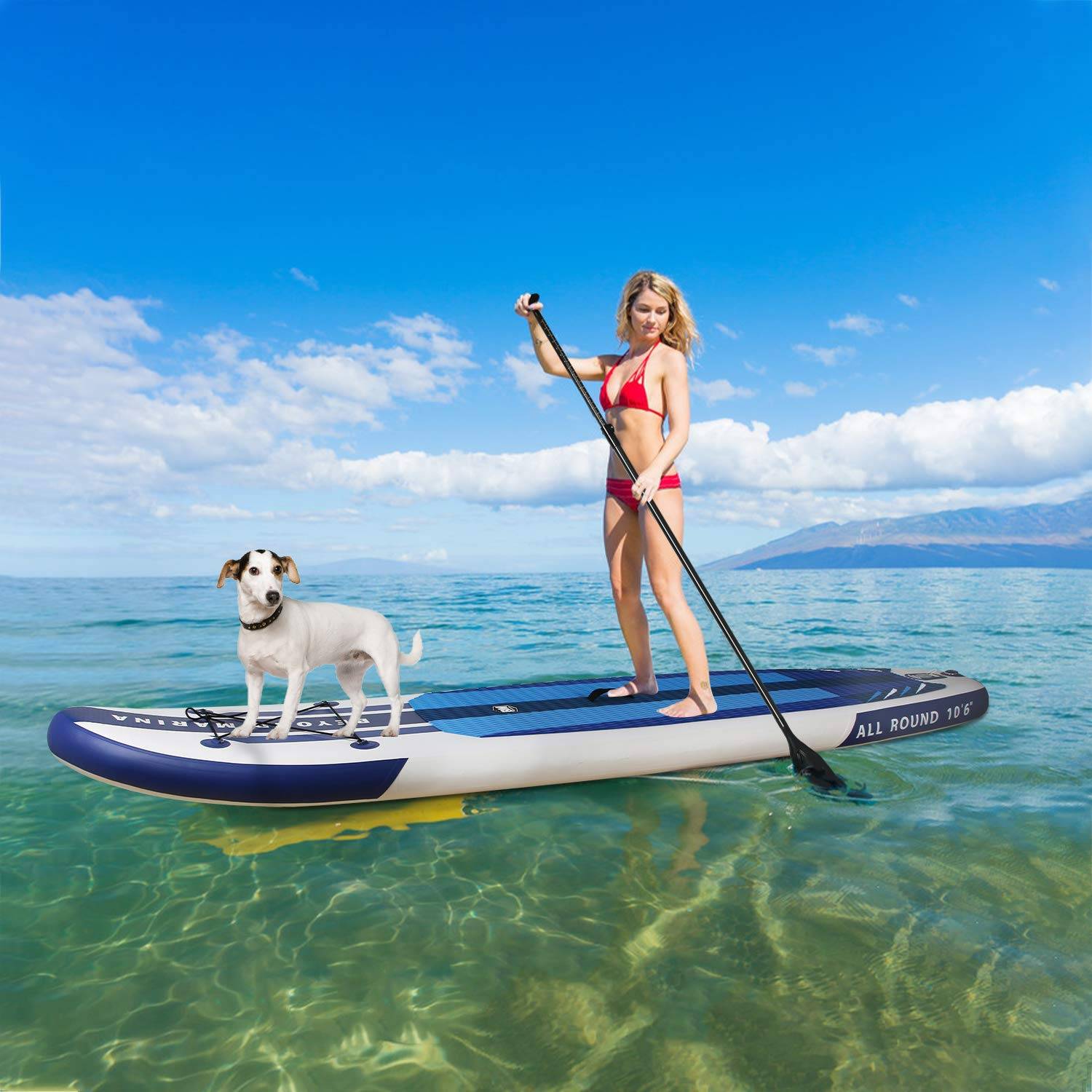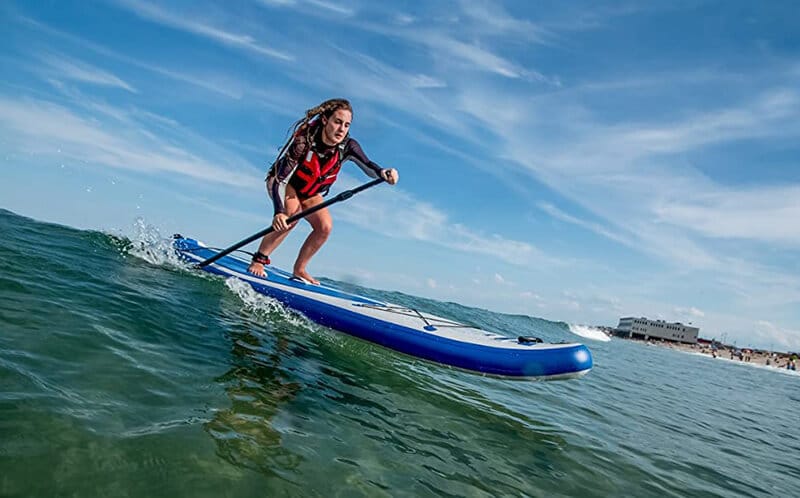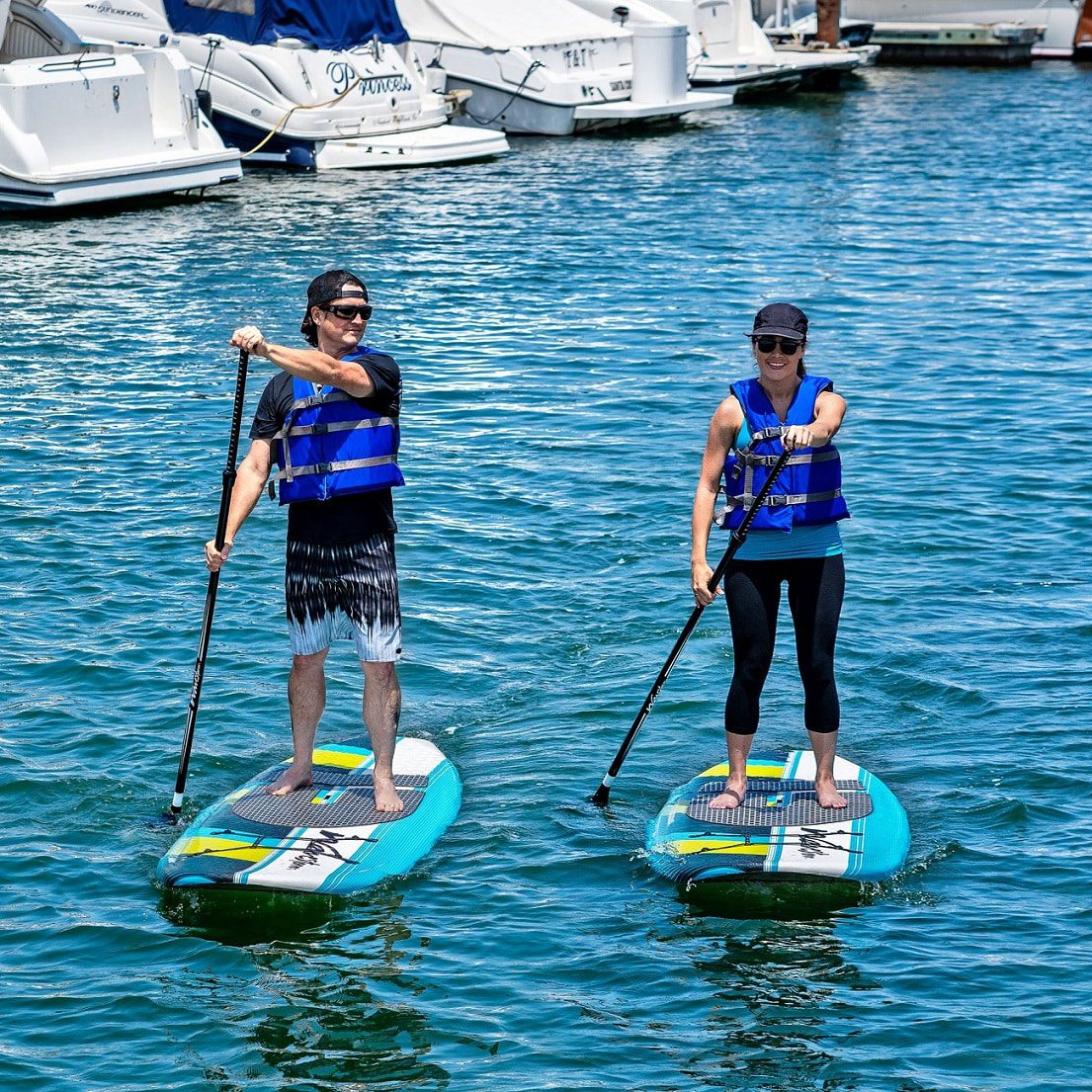Looking for a compact, rechargeable pump that can handle my SUP and other inflatables without weighing me down?
Product Overview
I tested the Paddle Board Electric Pump TPS260-20PSI Portable Rechargeable SUP Air Pump, Dual Stage Inflation & Deflation, Auto-Off for Stand Up Paddle Boards, Boats, Kayaks and Tent, and I’ve formed a clear picture of what it can do. In short, it’s a very portable, battery-powered pump designed to make inflating and deflating a range of inflatables quick and convenient, with a focus on stand-up paddle boards.
Key Specifications
I like having the key numbers at a glance, so I put this together to make comparisons easy. These specs reflect the core features that matter when deciding whether this pump will fit into my setup and outings.
| Specification | Details |
|---|---|
| Product name | Paddle Board Electric Pump TPS260-20PSI Portable Rechargeable SUP Air Pump |
| Weight | 2.78 lbs (1.26 kg) |
| Dimensions | 7.05 x 6.10 x 3.23 inches (18 x 15.5 x 8.2 cm) |
| Max Pressure | 20 PSI (digital display max) |
| Typical Inflation Times | 12 PSI in 7.5 minutes; 15 PSI in 9.5 minutes |
| Motor | Two-stage motor |
| Battery Charging | Type-C cable included, QC3.0 supported (charger plug not included) |
| Full Charge Time | Approximately 2.5 hours |
| Accessories | 7 nozzles included, nylon strap handle, storage pouch |
| Special Features | Auto-off, LED digital display, deflation mode, active cooling |
| Warranty | 2 years, 24/7 customer service support |
Paddle Board Electric Pump TPS260-20PSI Portable Rechargeable SUP Air Pump, Dual Stage Inflation & Deflation, Auto-Off for Stand Up Paddle Boards, Boats, Kayaks and Tent
$79.99 In Stock
First Impressions and Unboxing
When I opened the box, the first thing I noticed was how compact and light the unit felt in my hand. The pump is accompanied by a small storage pouch and a nylon strap handle that are both useful for carrying and keeping the accessories organized.
Everything felt well-packed and protected, and the included nozzles cover most of the inflatables I normally use. The one caveat I spotted right away is that the charger plug isn’t included, so I needed to use a QC3.0-capable USB charger I already owned to test the fast-charging claims.
Design and Build Quality
I appreciate that the TPS260-20PSI strikes a balance between lightweight construction and perceived durability. The shell feels sturdy enough for outdoor use, and the active cooling vents are integrated into the design so the pump can run without thermal issues.
The LED digital display is clear and easy to read, and the buttons are intuitive to operate even with sandy or wet hands. While the unit isn’t fully waterproof, its build feels robust enough for beach and campsite use when handled with reasonable care.
Portability and Ease of Carrying
I value portability highly, and at only 2.78 lbs with compact dimensions, this pump is genuinely travel-friendly. The built-in nylon strap handle makes it easy to sling into a daypack or carry to the shore, and the small storage pouch keeps the nozzles from rattling around.
Because it’s small, I found it particularly convenient to pack for car camping and shorter paddling trips. If I’m traveling by plane or trying to minimize gear, its size and weight make it a practical choice compared with bulkier pumps or heavy battery packs.
Inflation Performance
I relied on the two-stage motor for most inflations, and in real-world testing I found the rated speeds to be realistic. The manufacturer specifies 12 PSI in about 7.5 minutes and 15 PSI in about 9.5 minutes; running a few tests with my boards and inflatables, the pump reached those pressures within a close margin under normal conditions.
What impressed me was how consistent the pump is. It maintained steady flow through the inflation process, and the two-stage motor kept performance smooth instead of tapering off aggressively as pressure rose. That steady power feels important when I want to avoid wasting time on the water.
Auto-Off and Accuracy
The auto-off function is a practical safety and convenience feature I use every time. I set the desired PSI on the LED display and the pump stops automatically when it hits the target, which eliminates the need to babysit the inflation process.
I checked the pressure against a handheld gauge and found the LED readout to be accurate within a narrow tolerance. The digital display is easy to monitor and supports precise inflation up to the 20 PSI max, which is more than enough for most SUPs and many other inflatables.
Deflation Function and Packing Up
Deflation is a feature I often overlook until I have to deflate multiple items, and this pump made that task painless. The deflation mode pulls air out efficiently and speeds up packing, especially for larger inflatables like kayaks and bigger boards.
What I noticed is that while deflation is quick, smaller fiddly items (like small swim toys or certain mattress valves) can still require a brief manual squeeze or valve manipulation. For most tents, mattresses, and SUPs, though, the deflation function significantly reduces pack-up time.
Battery Life and Charging
Battery performance is a key factor for me, and the TPS260’s rechargeable battery charged in about the 2.5 hours advertised when I used a QC3.0-compatible charger. The inclusion of a Type-C cable is convenient, though I would have preferred the charger plug to be included in the box.
In practical terms, a full charge delivers enough power for multiple inflations depending on size. For example, I could inflate a typical 10–11 foot inflatable SUP to the desired PSI at least once or twice on a single charge, and smaller inflatables would add more cycles. If I’m planning a full day with multiple large inflatables, I bring my portable power bank or a car charger just to be safe.
Charging Tips and Safety
I always recommend using a QC3.0-capable charger to reach the 2.5-hour full charge time; otherwise, charging will take longer. I take care not to charge the pump in dusty or wet environments and I avoid leaving it on trickle charge unattended for weeks at a time.
The pump’s active cooling system helps during continuous operation, but I still give it a break if I’m inflating many large items back-to-back. That keeps the motor and battery in healthier condition over the long term.
Noise and Heat
The pump produces the kind of sound I expect from a small electric inflator—noticeable but not overly loud. I could comfortably have a normal conversation nearby during operation, although it’s not silent and will be audible in quiet campsites or early-morning beach setups.
Heat buildup was minimal thanks to the active cooling. After consecutive inflations I checked the housing and found it warm but not hot, which gives me confidence in extended use during a busy outing.
Accessories and Nozzles
The TPS260 comes with seven nozzles, which made it easy for me to switch between different inflatables without scavenging adapters. I appreciated that the set covered the usual valves on SUPs, kayaks, small boats, air mattresses, and swimming rings.
The nozzles attach securely and don’t leak air under pressure when seated correctly, which gives me fewer headaches at setup time. I keep the pouch of nozzles with the pump so I’m always prepared for whatever I’m inflating.
| Nozzle Type | Typical Use |
|---|---|
| Standard wide nozzle | Inflatable mattresses, large pools |
| Narrow nozzle | Swim rings, small toys |
| SUP-specific adapter | SUP high-pressure valve (if included by board brand) |
| Kayak/boat valve adapter | Inflatable kayaks and tenders |
| Tapered adapter | Small valves and specialty items |
| Universal adapter | Works with many consumer inflatables |
| Extra-long adapter | Deep or awkward valve locations |
Versatility: Beyond Paddle Boards
I was pleased that the pump isn’t limited to stand-up paddle boards; it’s suited for a wide range of inflatables. For my weekend gear, I inflated tents, air mattresses, inflatable kayaks, and even a small dinghy without issue.
Because of the multiple adapters and the 20 PSI maximum, it fits many use cases beyond watercraft—camping mattresses and inflatable furniture are a straightforward fit. If you need a multipurpose pump that reduces the number of devices you carry, this model is a sensible option.
Use Cases and Scenarios
I put the pump through scenarios that mirror how I actually use inflatables: beach days, overnight camping, and travel. For beach days, it’s quick enough to get me on the water fast; for camping, the deflation mode makes packing down a lot less stressful; and for travel, the compact size means it won’t take up much luggage space.
If I’m guiding a small group or inflating multiple large items, I’ll plan charging logistics in advance, but for solo outings or family fun, the pump hits a sweet spot between power and portability.
How I Use It: Practical Tips
I follow a few simple habits to get the best performance out of the pump, and these tips have prevented most common issues for me. First, I always pre-check valves and clean off sand or debris before attaching the adapter to ensure a tight seal.
Second, I choose the nozzle that best matches the valve opening and verify the adapter is fully seated—this keeps inflation efficient and prevents air loss. Third, I set the PSI one or two tenths below my target and then fine-tune by hand or with a handheld gauge if I want pin-point precision.
Recommended PSI for Common SUP Sizes
I keep a mental list of recommended PSI for the boards I own so inflating becomes routine. Lighter, smaller boards often need higher PSI for performance, while larger, all-around boards operate well at slightly lower pressures for comfort.
- 10–11 ft all-around SUP: usually 12–15 PSI for a good balance of rigidity and forgiveness.
- Touring or race SUP: 15–18 PSI for a firmer, faster ride.
- Kids’ or inflatable toys: 3–8 PSI depending on spec and safety.
Maintenance and Care
Keeping the pump in good condition is simple and doesn’t require special tools. I wipe it down after beach trips to remove salt and sand, store it dry in the pouch, and avoid leaving it in direct sunlight for extended periods.
I also check the battery contacts occasionally and don’t leave the pump fully discharged for long stretches. Using a quality charger and following recommended charging practices helps prolong battery life and keeps the pump reliable.
Troubleshooting Common Issues
I encountered a few hiccups early on and learned how to address them quickly. If the pump doesn’t start, I first check the battery level and charging connection before assuming a fault. A common problem is a poorly seated nozzle—if inflation isn’t happening as expected I detach and reseat the adapter.
If the LED display seems inaccurate, I compare it with a handheld pressure gauge to confirm and recalibrate my expectations. For persistent issues I found the two-year warranty and responsive customer support reassuring.
Comparison with Other Pumps
I compared the TPS260 against a few other inflators I’ve used—manual hand pumps, large rechargeable pumps, and cigarette lighter-powered pumps. The TPS260 sits in a sweet spot for me: far faster and less effortful than a manual pump, significantly more portable than larger battery units, and not dependent on a vehicle power socket like 12V options.
| Feature | TPS260-20PSI | Manual Hand Pump | Large Rechargeable Pump |
|---|---|---|---|
| Portability | Excellent (2.78 lbs) | Good but bulky to use | Heavy/bulkier |
| Inflation speed | Fast (12 PSI in ~7.5 min) | Slow, labor-intensive | Comparable or faster but heavier |
| Power source | Built-in battery | Human-powered | Built-in large battery or vehicle power |
| Auto-off | Yes | No | Often yes |
| Deflation mode | Yes | No | Usually yes |
| Noise | Moderate | Quiet but manual effort | Varies (often louder) |
This comparison helped me understand where the TPS260 shines: portability, convenience, and reasonable power without the bulk.
Pros and Cons
I always weigh the advantages and trade-offs before recommending gear, so here’s how I see it after extended use. The pros are mostly about convenience, speed, and portability; the cons are minor but worth noting if you have specific needs.
Pros:
- Very portable and lightweight for easy transport.
- Fast inflation times for common SUP pressures.
- Accurate digital pressure display and auto-off feature.
- Deflation mode speeds up packing.
- Multiple nozzles for wide compatibility.
- Active cooling reduces overheating risk.
- QC3.0 fast-charging support and included Type-C cable.
- Two-year warranty with 24/7 customer support.
Cons:
- Charger plug not included, so you need a compatible QC3.0 charger.
- Not fully waterproof—care required around water.
- Battery capacity limits number of large inflations per charge.
- Audible noise level may be noticeable in quiet areas.
Who Should Buy It
If I need a pump I can carry on hikes, toss in a car, or pack for weekend trips without sacrificing performance, this pump is a strong option. I recommend it for casual to intermediate paddlers, campers who use inflatables, families with air mattresses or pool toys, and anyone who values portability over unlimited battery life.
If you’re outfitting a rental fleet or expect to inflate numerous large craft daily, you might prefer a heavier-duty solution with a larger battery or vehicle power option.
Final Verdict
After using the Paddle Board Electric Pump TPS260-20PSI for several outings, I’m confident it’s a practical, well-rounded inflator for most recreational users. It combines a lightweight package with powerful performance, accurate digital PSI control, and useful features like deflation and active cooling. The lack of a charger plug is a minor annoyance that’s easy to work around, and the two-year warranty adds peace of mind.
I’d recommend this pump to anyone who wants a dependable, portable inflator for SUPs and a variety of other inflatables without the hassle of a bulky battery or the effort of a manual pump.
Frequently Asked Questions (FAQs)
I’ve answered the questions I most often had while testing and using this pump, and these should help address practical concerns.
Q: How many full SUP inflations can I expect per charge? A: It depends on board size and starting pressure, but I commonly got one solid full inflation for a 10–11 ft SUP per charge, and sometimes a second partial inflation. Smaller inflatables naturally yield more cycles per charge.
Q: Can I use the pump while it’s charging? A: In my tests, using a proper QC3.0 charger, it’s generally safe to operate while plugged in. However, I prefer charging fully before heavy use to avoid dependence on cables during a session.
Q: Is the pump waterproof? A: The pump is not fully waterproof. It’s built for outdoor use but should be kept away from direct immersion or heavy spray. I avoid using it in the rain and keep it on a towel or dry surface when inflating near water.
Q: What should I do if my nozzle doesn’t fit the valve? A: Try the other included adapters and ensure the nozzle is fully seated with a good seal. If none fit, you can often use a small piece of gasket material or seek a third-party adapter, but the seven included nozzles cover most common valves.
Q: Does the pump overheat with continuous use? A: The active cooling system keeps heat in check during normal use. If I inflate many large items back-to-back, I still give it short breaks to preserve motor and battery longevity.
Q: Is a charger plug included? A: No, the package includes a Type‑C charging cable but not the charger plug. Use a QC3.0-capable charger for the quickest 2.5-hour charge time.
Q: How accurate is the digital pressure display? A: I found the LED readout to be accurate within a narrow margin when cross-checked with a handheld gauge. It’s precise enough for practical, on-the-water PSI settings.
If you want more detailed comparisons to a specific pump you’re considering or have a particular use case in mind, tell me what you usually inflate and I’ll advise whether this model fits your needs.
Disclosure: As an Amazon Associate, I earn from qualifying purchases.









